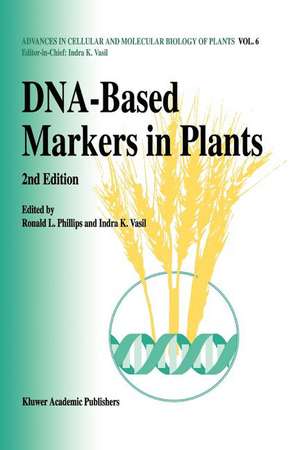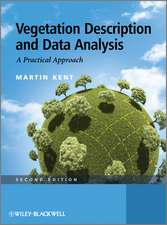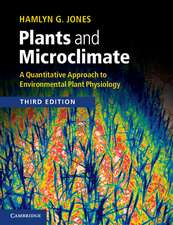DNA-Based Markers in Plants: Advances in Cellular and Molecular Biology of Plants, cartea 6
Editat de R.L. Phillips, Indra K. Vasilen Limba Engleză Paperback – 4 dec 2010
| Toate formatele și edițiile | Preț | Express |
|---|---|---|
| Paperback (2) | 393.90 lei 6-8 săpt. | |
| SPRINGER NETHERLANDS – 5 noi 2012 | 393.90 lei 6-8 săpt. | |
| SPRINGER NETHERLANDS – 4 dec 2010 | 1227.67 lei 6-8 săpt. | |
| Hardback (1) | 1233.06 lei 6-8 săpt. | |
| SPRINGER NETHERLANDS – 30 apr 2001 | 1233.06 lei 6-8 săpt. |
Preț: 1227.67 lei
Preț vechi: 1497.16 lei
-18% Nou
Puncte Express: 1842
Preț estimativ în valută:
234.95€ • 244.38$ • 193.96£
234.95€ • 244.38$ • 193.96£
Carte tipărită la comandă
Livrare economică 15-29 aprilie
Preluare comenzi: 021 569.72.76
Specificații
ISBN-13: 9789048156726
ISBN-10: 9048156726
Pagini: 528
Ilustrații: XII, 514 p.
Dimensiuni: 155 x 235 x 28 mm
Greutate: 0.73 kg
Ediția:Softcover reprint of hardcover 2nd ed. 2001
Editura: SPRINGER NETHERLANDS
Colecția Springer
Seria Advances in Cellular and Molecular Biology of Plants
Locul publicării:Dordrecht, Netherlands
ISBN-10: 9048156726
Pagini: 528
Ilustrații: XII, 514 p.
Dimensiuni: 155 x 235 x 28 mm
Greutate: 0.73 kg
Ediția:Softcover reprint of hardcover 2nd ed. 2001
Editura: SPRINGER NETHERLANDS
Colecția Springer
Seria Advances in Cellular and Molecular Biology of Plants
Locul publicării:Dordrecht, Netherlands
Public țintă
ResearchCuprins
1. Some concepts and new methods for molecular mapping in plants*.- 2. PCR-based marker systems.- 3. Constructing a plant genetic linkage map with DNA markers.- 4. Use of DNA markers in introgression and isolation of genes associated with durable resistance to rice blast.- 5. Mapping quantitative trait loci*.- 6. Comparative mapping of plant chromosomes.- 7. Breeding multigenic traits.- 8. Information systems approaches to support discovery in agricultural genomics.- 9. Introduction: molecular marker maps of major crop species.- 10. Molecular marker analyses in alfalfa and related species.- 11. An integrated RFLP map of Arabidopsis thaliana*.- 12. An integrated map of the barley genome.- 13. DNA-based marker maps of Brassica.- 14. Molecular genetic map of cotton.- 15. Maize molecular maps: Markers, bins, and database.- 16. RFLP map of peanut.- 17. Phaseolus vulgaris — The common bean integration of RFLP and RAPD-based linkage maps.- 18. RFLP map of the potato.- 19. Rice molecular map.- 20. A framework genetic map of sorghum containing RFLP, SSR and morphological markers.- 21. RFLP map of soybean.- 22. Genetic mapping in sunflowers.- 23. The molecular map of tomato.- 24. Molecular-marker maps of the cultivated wheats and other Triticum species.- 25. Molecular marker linkage maps in diploid and hexaploid oat (Avena sp.).- 26. A compilation of molecular genetic maps of cultivated plants.- List of contributors.
Recenzii
`Overall, the book is a very useful overview of DNA marker technology. It nicely complements existing manuals, such as DNA Marker: Protocols, Applications and Overviews. Many graduate students, researchers beginning in a new area or those wishing to learn about this fast developing field will also find it worthwhile. It could also be useful for plant breeders, and bioinformatics specialists serving the plant science community.'
Plant Science, 161 (2001)
Plant Science, 161 (2001)













